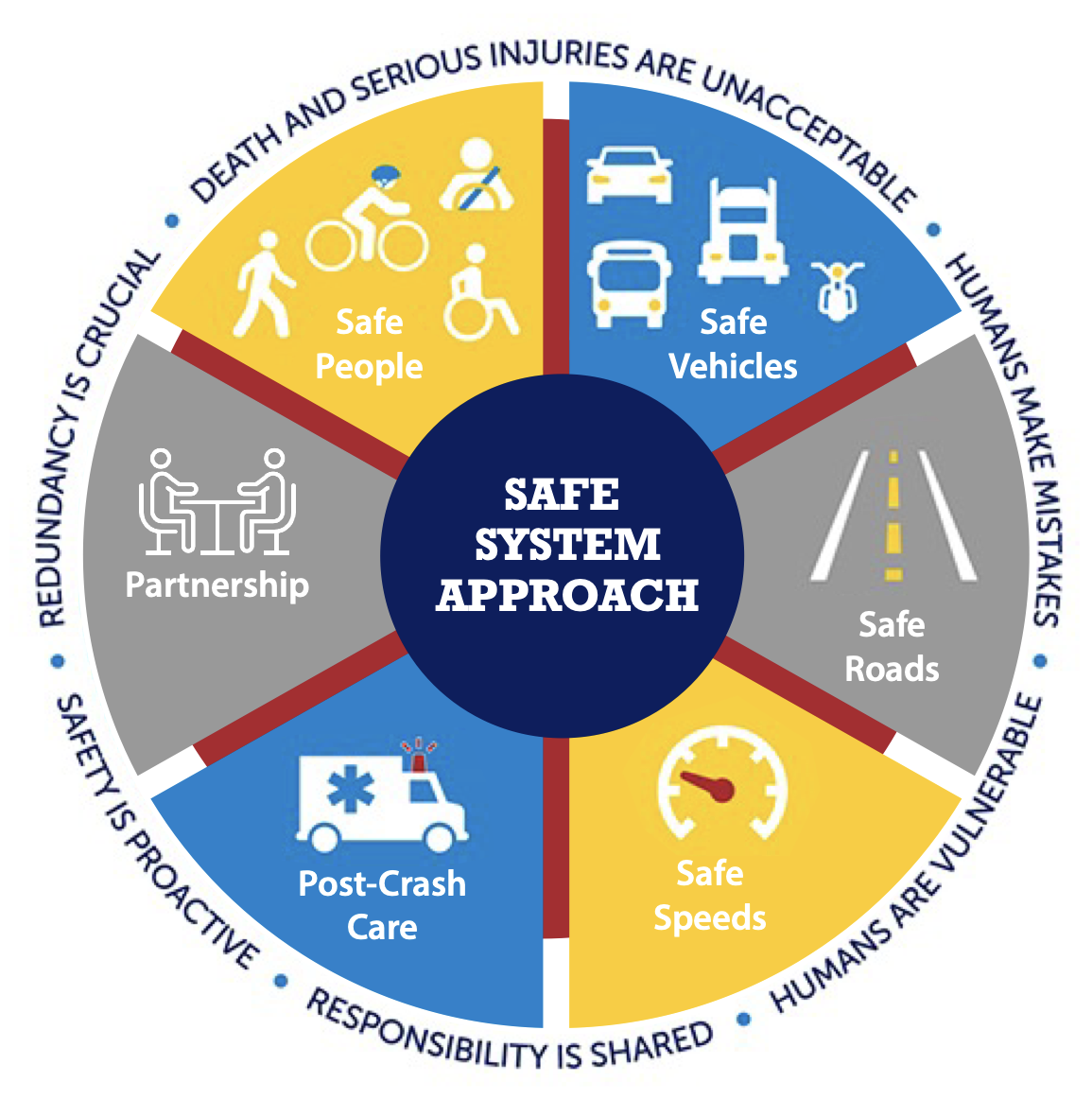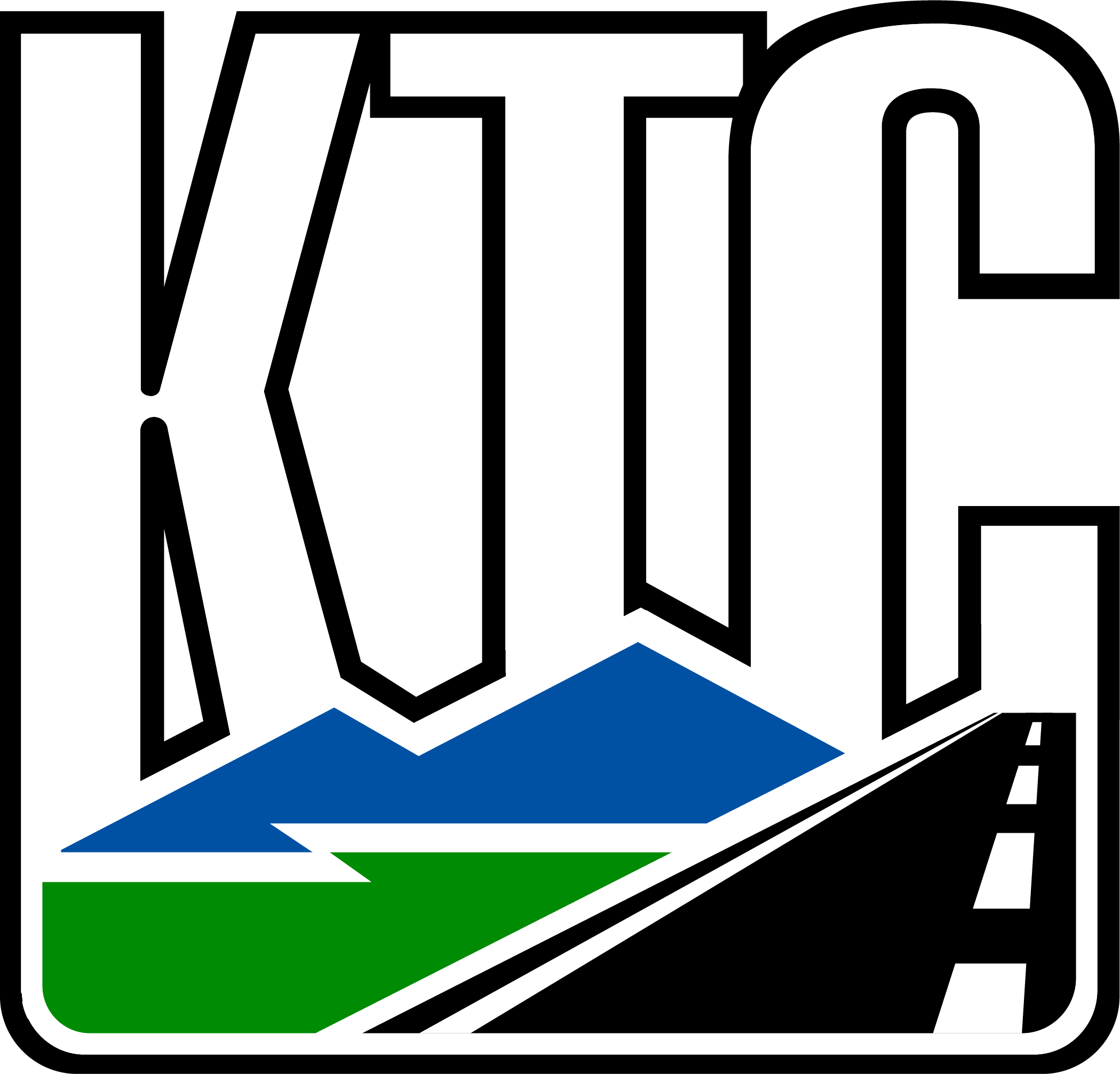How to Think About the Safe System Approach in Road Design
Roadway users – motorists, pedestrians, micromobility users, transit riders — all have the potential to make mistakes that could result in a crash on the road system. Historically, crash analysis has dwelled on user behaviors and their role in producing unsafe conditions. While understanding the contributions of user behaviors is valuable, focusing on them alone glances over the fact that user behaviors occur within and are shaped by particular road contexts, designs, and features.
Knowing that mistakes are inevitable, we can take a more expansive approach to crash analysis and road design. Although road designers may not perform crash analysis on their projects, they are responsible for looking at the results of crash investigations and figuring out whether some inherent feature of a facility or design contributed to a crash. This knowledge can be used to implement corrective actions that will minimize the likelihood of users committing similar errors in the future. Importantly, knowledge gained based on user experiences and outcomes at one site can be applied to design problems elsewhere in similar road contexts.
Recognizing the importance of wide-ranging, holistic thinking for improving road safety, FHWA, KYTC, and transportation agencies across the world are embracing the Safe System Approach (SSA). The core idea underpinning the SSA is that if road users make errors, road designs should be forgiving of mistakes. A forgiving design helps reduce mistakes, mitigates the impact of errors when they occur, equitably accommodates all users, and minimizes the likelihood of serious crashes by building in layers of protection that tamp down risk.
Table 1 lists the five defining features of safe transportation systems identified by FHWA. Designers have a limited ability to address some elements. For example, they are not involved in the design or regulation of vehicles. Nor are they responsible for post-crash care. But they make decisions that can nonetheless have an impact on these elements. For example, road designs should account for the possibility that first responders will need to access a crash site at some point. With respect to vehicle design, it is helpful to think through how different vehicle types influence a driver’s ability to detect and react to hazards in the road and roadside environment.
| Table 1 Elements of Safe Transportation Systems | |
|---|---|
| Feature | Explanation |
| Safe road users | • All user needs must be addressed in an equitable manner. Each road user is responsible for operating to the best of their ability. |
| Safe vehicles | • Vehicle design and regulations need to incorporate safety features and technologies that minimize crash frequencies and severity. |
| Safe speeds | • People are more likely to survive low-speed crashes. Lower speeds reduce impact forces, give users additional time to perceive and then react to one another, and improve visibility. |
| Safe roads | • Road designs must accommodate mistakes and account for injury tolerances. This helps reduce crash severity. Separating users in space and time decreases the number of conflicts and incidents. |
| Post-crash care | • Emergency responders must be able to access crash sites quickly and safety. Post-crash investigations and traffic incident management also fall under this heading. |
| Partnerships | • Building and maintaining a safe system is only possible through coordination, dialogue, and collaboration. This entails divisions within KYTC working together to develop safe design solutions based on analysis of existing facility performance and input from community stakeholders. |
Source: FHWA
Although FHWA does not include partnerships among its elements of safe transportation systems, KYTC views the conversations and collaborations enabled by strong partnerships as a critical ingredient for building and maintaining safe roadway systems. Consistent with SSA principle of shared responsibility (see below), the Cabinet recognizes that design and engineering done in a vacuum will not result in a safe system. Designers need to work with divisions across KYTC and listen to feedback from community stakeholders to understand their concerns. Non-engineering perspectives can be extremely valuable for implementing design techniques that will preserve safety throughout a project’s service life. Remember, the SSA is scalable, so the level of engagement between designers and other stakeholders will vary by project type. For example, small resurfacing projects will likely require less consultation between designers and other stakeholders than major reconstruction projects. Nonetheless, even on small projects designers must always be on the lookout for ways to incorporate features that will help achieve the goals of the SSA.

| Table 2 Safe System Approach Principles | |
|---|---|
| Principle | Explanation / What to Do? |
| Death and serious injuries are unacceptable |
|
| Users make mistakes |
|
| Human bodies have a limited ability tolerate crash forces |
|
| Collective responsibility for user safety |
|
| Safety is proactive |
|
| Redundancy improves safety |
|
KYTC’s commitment to the SSA is evident in the agency’s Complete Streets initiative and ongoing efforts to integrate safe-system principles into the project development process. A Complete Street is a facility that provides safe and comfortable travel experience for all users by incorporating SSA principles and enabling all users to see and be seen by other users — regardless of their mode of transportation.
Engineers must balance many considerations and demands when designing roads. How can designers place the SSA at their forefront of road designs? A good place to begin — regardless of project type — is to ask what users will use the facility, which users are the most vulnerable, and what features of a facility contribute to their vulnerabilities.
Understanding the project context is critical for documenting user vulnerabilities and determining what kind of design solutions are most likely to eliminate them. Defining the project context involves:
- Documenting characteristics of the existing facility
- Establishing the purpose and need
- Documenting what kinds of users are present
- Specifying the context classification
- Understanding the speed environment and vehicle composition
- Documenting the road’s primary function
- Reviewing site crash histories and safety problems
This information can be gleaned from DNA studies or is generated in the early stages of project development. When analyzing project context, the designer can get a handle on vulnerabilities by looking at how the capabilities and limitations of different user groups influence their interaction with the facility and one another. Properly implemented, a road built using SSA principles must accommodate:
- Risk/injury tolerances of road users
- Physical, perceptual, and cognitive abilities of all road users
- Performance limitations of all vehicles
Knowledge of human factors and the Human Factors Guidelines (HFG) can help designers zero in on design solutions that are most appropriate given the user mix and project context. Incorporating solutions from the HFG into designs is critical because they explicitly address the needs, capabilities, and limitations of users.
Additional Resources
FHWA Proven Safety Countermeasures Filter Tool
- An intuitive tool that lets users identify effective safety countermeasures based on project context, problem types, and keyword searches.
- A report that reviews of SSA principles, but which focuses primarily on how policies and initiatives related to behavioral safety are valuable for implementing the SSA equitably and proactively.
World Resource Institute’s Sustainable & Safe: A Vision and Guidance for Zero Road Deaths
- While targeted at low- and middle-income countries, this publication provides an in-depth overview of the SSA, including its application in Europe, Australia, and New Zealand.
Austroads Safe System Assessment Framework
- Along with outlining a scoring system that can be used to determine how well a facility aligns with safe system principles, this publication catalogues safety treatments that can be used to mitigate risks.
CONTACT:
Chris VanDyke
Research Scientist | Program Manager
chrisvandyke@uky.edu


